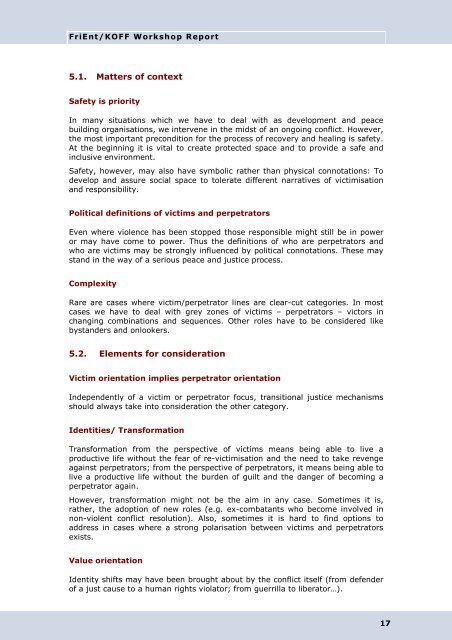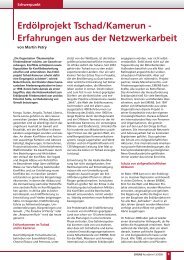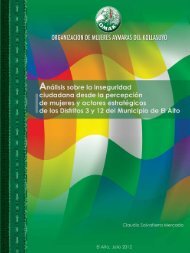Engaging with Victims and Perpetrators in Transitional ... - FriEnt
Engaging with Victims and Perpetrators in Transitional ... - FriEnt
Engaging with Victims and Perpetrators in Transitional ... - FriEnt
- No tags were found...
You also want an ePaper? Increase the reach of your titles
YUMPU automatically turns print PDFs into web optimized ePapers that Google loves.
<strong>FriEnt</strong>/KOFF Workshop Report5.1. Matters of contextSafety is priorityIn many situations which we have to deal <strong>with</strong> as development <strong>and</strong> peacebuild<strong>in</strong>g organisations, we <strong>in</strong>tervene <strong>in</strong> the midst of an ongo<strong>in</strong>g conflict. However,the most important precondition for the process of recovery <strong>and</strong> heal<strong>in</strong>g is safety.At the beg<strong>in</strong>n<strong>in</strong>g it is vital to create protected space <strong>and</strong> to provide a safe <strong>and</strong><strong>in</strong>clusive environment.Safety, however, may also have symbolic rather than physical connotations: Todevelop <strong>and</strong> assure social space to tolerate different narratives of victimisation<strong>and</strong> responsibility.Political def<strong>in</strong>itions of victims <strong>and</strong> perpetratorsEven where violence has been stopped those responsible might still be <strong>in</strong> poweror may have come to power. Thus the def<strong>in</strong>itions of who are perpetrators <strong>and</strong>who are victims may be strongly <strong>in</strong>fluenced by political connotations. These mayst<strong>and</strong> <strong>in</strong> the way of a serious peace <strong>and</strong> justice process.ComplexityRare are cases where victim/perpetrator l<strong>in</strong>es are clear-cut categories. In mostcases we have to deal <strong>with</strong> grey zones of victims – perpetrators – victors <strong>in</strong>chang<strong>in</strong>g comb<strong>in</strong>ations <strong>and</strong> sequences. Other roles have to be considered likebyst<strong>and</strong>ers <strong>and</strong> onlookers.5.2. Elements for considerationVictim orientation implies perpetrator orientationIndependently of a victim or perpetrator focus, transitional justice mechanismsshould always take <strong>in</strong>to consideration the other category.Identities/ TransformationTransformation from the perspective of victims means be<strong>in</strong>g able to live aproductive life <strong>with</strong>out the fear of re-victimisation <strong>and</strong> the need to take revengeaga<strong>in</strong>st perpetrators; from the perspective of perpetrators, it means be<strong>in</strong>g able tolive a productive life <strong>with</strong>out the burden of guilt <strong>and</strong> the danger of becom<strong>in</strong>g aperpetrator aga<strong>in</strong>.However, transformation might not be the aim <strong>in</strong> any case. Sometimes it is,rather, the adoption of new roles (e.g. ex-combatants who become <strong>in</strong>volved <strong>in</strong>non-violent conflict resolution). Also, sometimes it is hard to f<strong>in</strong>d options toaddress <strong>in</strong> cases where a strong polarisation between victims <strong>and</strong> perpetratorsexists.Value orientationIdentity shifts may have been brought about by the conflict itself (from defenderof a just cause to a human rights violator; from guerrilla to liberator…).17
















